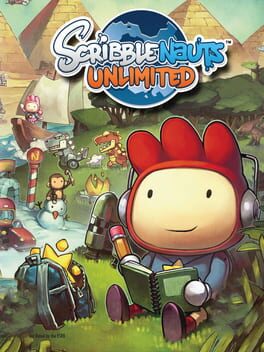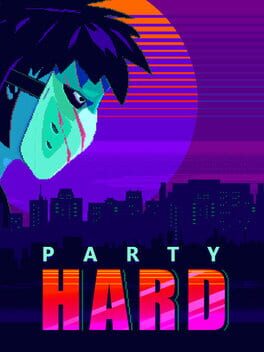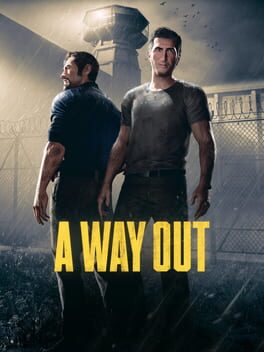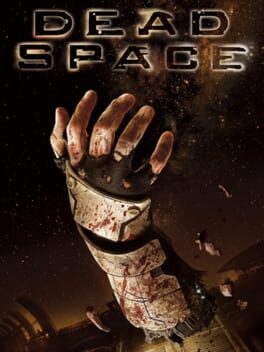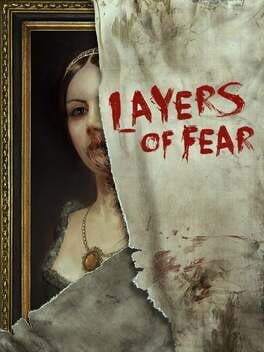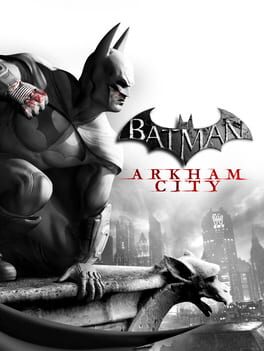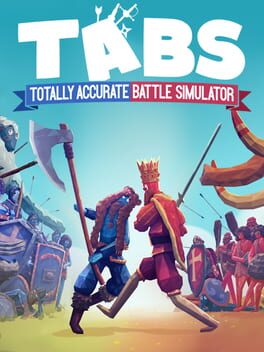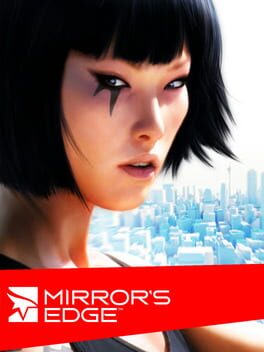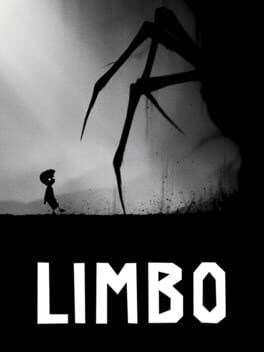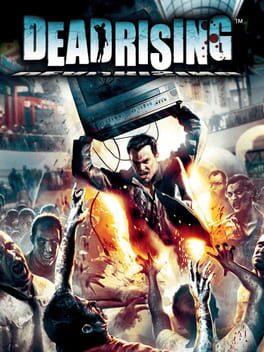Rezlo
BACKER
A textbook pick-up-and-play title for couch gameplay, Scribblenauts hits that craving for relaxation just right. It has plenty of worlds and missions to keep you busy for a good while when you’re not testing the limits of your creativity.
By and far the greatest appeal of Scribblenauts is the ability to conjure up a plethora of items, people, and adjective modifiers for all things interactable. While it’s clear some corners have been cut here and there, it’s truly impressive how thorough the developers are in allowing for a good amount of freedom. It’s not the most fleshed out system, but it can be fun to tinker around with. The only thing I’ll harp on is the sometimes fickle strictness some missions have on what counts as correct. Part of the fun is finding the out-of-the-box solutions, but I suppose you can’t prepare for EVERY possibility.
By and far the greatest appeal of Scribblenauts is the ability to conjure up a plethora of items, people, and adjective modifiers for all things interactable. While it’s clear some corners have been cut here and there, it’s truly impressive how thorough the developers are in allowing for a good amount of freedom. It’s not the most fleshed out system, but it can be fun to tinker around with. The only thing I’ll harp on is the sometimes fickle strictness some missions have on what counts as correct. Part of the fun is finding the out-of-the-box solutions, but I suppose you can’t prepare for EVERY possibility.
2015
Party Hard is true to its name; it’s a decently hard game, a fact I wouldn’t mind if it wasn’t quite as punishing as it is. The stamina, AI eyesight, and frequent cops make for a sometimes frustrating experience when all your progress is lost because there’s nowhere or way to run, sometimes due to the structure of the map itself. Conversely, the gameplay loop is something I actually quite enjoyed in its most basic essence. Being a party-stalking slasher is a great hook and rife with potential, but Party Hard doesn’t go all in, a sad fact given what this game could be. There’s not enough traps, characters, items, weapons, and enemy varieties for the type of game this is. A game like Party Hard is meant to survive and thrive based on its diversity of options, but more often than not you're left with only your trusty knife and a prayer. While perfectly playable, Party Hard leaves you wanting more than it can give you.
2018
A lukewarm co-op game whose major pitfall is being woefully uninspired. A Way Out does grant some decent enjoyment, but not from what it offers at face value. The voice acting is subpar, the writing fit for Wattpad, and the main story is comically generic. Where it does shine is in the moment to moment skits that come with playing the game with a good co-op partner. The throwaway mini-games, derpiness of the presentation and dialogue, and general absurdity makes the game charming despite its flaws. And it does so in a way that makes A Way Out an unintentionally excellent comedy.
A good example is when one player is left to goof around and throw darts while the other is having what should be a serious conversation with a family member, made even funnier by the unflinchingly straight way the game is presented. Yet, even those moments are too fleeting to carry the rest of the game. Don’t get me wrong, the split-screen approach is a fun throwback and the commitment to cooperative actions is admirable, but in practically every sense A Way Out is more novelty than novel.
A good example is when one player is left to goof around and throw darts while the other is having what should be a serious conversation with a family member, made even funnier by the unflinchingly straight way the game is presented. Yet, even those moments are too fleeting to carry the rest of the game. Don’t get me wrong, the split-screen approach is a fun throwback and the commitment to cooperative actions is admirable, but in practically every sense A Way Out is more novelty than novel.
2008
A paragon in atmosphere and sound design, Dead Space is a game that punches far above the AAA weight class in nearly all categories. Its unique integration of a sci-fi horror shooter experience is seamless, and its streamlined inventory system, unobtrusive UI, and infallible navigation system serve as the sprinkles atop this touchstone of gaming horror.
In the year 2508 you follow Isaac Clarke, a systems specialist sent to repair the USG Ishimura, a mining vessel that’s long since lost contact with the outside world. Given the name of the game, you can guess that things go to hell real quick with monstrously macabre creatures prowling the whole ship. Speaking of, the vessel itself is almost as alive as the surviving crew. The hum-dum of the mechanical ship ambience and unending growls of the beasts just beyond your vision works wonders alongside Isaac’s breathing and heartbeat in heaping on the dread. My only complaint in that department is how Isaac never talks, making it a bit harder to humanize him.
In terms of items Dead Space has no filler. Every object has its use, whether you’re selling it for money or using it to save your life against monsters. To complement that the game possesses a very concise, easily distinct organization of chapters that makes for a natural conclusion to a session, with some light backtracking being the only negative aspect to come with it.
Each store and waystation are spaced out fairly liberally, so you should never really find yourself in trouble when without them. As for actually defending yourself, be assured that the game doesn’t waste its setting. Beside your repurposed planet-mining tools like the plasma cutter and line gun, you've also got a stasis module to slow down enemies and a telekinetic gauntlet to throw objects, a fact that serves as a real joy in allowing you to creatively dispatch your enemies. The likes of which you can’t help but be in grotesque awe of. Collectively, these potent ingredients make Dead Space a thrilling adventure not easily surpassed.
In the year 2508 you follow Isaac Clarke, a systems specialist sent to repair the USG Ishimura, a mining vessel that’s long since lost contact with the outside world. Given the name of the game, you can guess that things go to hell real quick with monstrously macabre creatures prowling the whole ship. Speaking of, the vessel itself is almost as alive as the surviving crew. The hum-dum of the mechanical ship ambience and unending growls of the beasts just beyond your vision works wonders alongside Isaac’s breathing and heartbeat in heaping on the dread. My only complaint in that department is how Isaac never talks, making it a bit harder to humanize him.
In terms of items Dead Space has no filler. Every object has its use, whether you’re selling it for money or using it to save your life against monsters. To complement that the game possesses a very concise, easily distinct organization of chapters that makes for a natural conclusion to a session, with some light backtracking being the only negative aspect to come with it.
Each store and waystation are spaced out fairly liberally, so you should never really find yourself in trouble when without them. As for actually defending yourself, be assured that the game doesn’t waste its setting. Beside your repurposed planet-mining tools like the plasma cutter and line gun, you've also got a stasis module to slow down enemies and a telekinetic gauntlet to throw objects, a fact that serves as a real joy in allowing you to creatively dispatch your enemies. The likes of which you can’t help but be in grotesque awe of. Collectively, these potent ingredients make Dead Space a thrilling adventure not easily surpassed.
2016
One cursory glance at Abzu and you know exactly what you’re in for: a small dive (wink) in a gorgeous underwater oasis interspersed with bite-sized puzzles and breadcrumb-like storytelling. By themselves the landscapes and sea life are fun to engage with, but admittedly I would have liked to see more diversity in how chapters played out. Add to that Abzu’s message feels a little too safe and on the nose, though I can sympathize with the difficulty in telling a succinct story in a short game with no dialogue. Now don’t let me sell it short, as the game does succeed in providing exceptional ambience and immersion with its vivid color palette and tranquil soundtrack, in addition to being incredibly accessible. Simply put, If you fancy the idea of an ocean walking simulator then the game is an easy pitch, but I’d argue almost anyone can get some decent mileage out of Abzu.
2011
As much as I wanted to like Homefront, I can’t help but lament its inability to overcome its shortcomings. On the whole, Homefront struggles to differentiate itself from the generic shooter template enough to make a lasting impression.
The red dawn-like setup is a neat idea that’s not been done a lot and it’s regretfully squandered here on an execution too safe and boring for its own good. I can commend the radio transmissions between missions for adding context, and the small peaks into the direness of occupied America can be moving, but it’s all undercut by a cliche cast of characters and a protagonist that may as well be a cardboard cutout. Where Homefront shines is in isolated scenes, both grand and grisly, but those moments are too sparse to keep the player engaged. Not to mention the story ends far too abruptly and with absolutely no punch.
As for the gameplay, Homefront never rises above basic competency. Most of the guns are forgettable, with the exceptions of the special guns like the launchers and snipers. The vehicle control sections are fine, even if they feel more like a met quota than a fun purposeful choice. Beyond some rudimentary grenades and rarely C4, that about does it for your arsenal. Again, while the groundwork exists for something experimental here, Homefront disappointingly insists on offering nothing new, even as a gimmick.
The red dawn-like setup is a neat idea that’s not been done a lot and it’s regretfully squandered here on an execution too safe and boring for its own good. I can commend the radio transmissions between missions for adding context, and the small peaks into the direness of occupied America can be moving, but it’s all undercut by a cliche cast of characters and a protagonist that may as well be a cardboard cutout. Where Homefront shines is in isolated scenes, both grand and grisly, but those moments are too sparse to keep the player engaged. Not to mention the story ends far too abruptly and with absolutely no punch.
As for the gameplay, Homefront never rises above basic competency. Most of the guns are forgettable, with the exceptions of the special guns like the launchers and snipers. The vehicle control sections are fine, even if they feel more like a met quota than a fun purposeful choice. Beyond some rudimentary grenades and rarely C4, that about does it for your arsenal. Again, while the groundwork exists for something experimental here, Homefront disappointingly insists on offering nothing new, even as a gimmick.
2016
A great example of the principle that looks aren’t everything. When you peel back the layers of shine and fluff of the game, you’ll find a mechanically and narratively shallow framework that brings little to the table. This, along with the overly repetitive nature of the game makes Layers of Fear a slog to go through.
To start with, Layers puts almost the whole story on the table within the first ten minutes of the game. The remaining bit you can parse out long before the actual game tells you. Unfortunately, the rest of the time isn’t used effectively either, as you’ll spend it endlessly opening doors to be jumpscared by an item falling, a woman approaching, etc. Jumpscares are fine but this game hands them out like candy. Moreover, Layers feels overindulgent of itself, a trait wholly unearned and a tad ironic given the emphasis on the tortured artist aesthetic.
Instead of focusing excessively on trippy visuals, Layers of Fear should have tried to create a more unique story told via more engaging means. That’s not to say the game needed to be action oriented, but the refusal to commit to a single cohesive genre faithfully holds this horror entry back from being anything more than a pretty window display fit for a tech demo.
To start with, Layers puts almost the whole story on the table within the first ten minutes of the game. The remaining bit you can parse out long before the actual game tells you. Unfortunately, the rest of the time isn’t used effectively either, as you’ll spend it endlessly opening doors to be jumpscared by an item falling, a woman approaching, etc. Jumpscares are fine but this game hands them out like candy. Moreover, Layers feels overindulgent of itself, a trait wholly unearned and a tad ironic given the emphasis on the tortured artist aesthetic.
Instead of focusing excessively on trippy visuals, Layers of Fear should have tried to create a more unique story told via more engaging means. That’s not to say the game needed to be action oriented, but the refusal to commit to a single cohesive genre faithfully holds this horror entry back from being anything more than a pretty window display fit for a tech demo.
The Infinity War of the PS2 generation, Marvel Ultimate Alliance is one of the few action RPGs that can hold my attention. Seeing as it was my first introduction to the genre and the greater Marvel Universe, it also holds a special place in my heart.
The opportunity to see so many superheroes and villains come together to fight is pure wish-fulfillment. To go along with that the story is super simple. All you need to know is that Doctor Doom is amassing a group of supervillains to take over the universe, and you must stop him with the help of various brawlers and brainiacs. It’s very much a child-friendly exposition adventure meant to showcase the many faces of Marvel, but it’s easily followable by anyone unfamiliar with the world. For existing fans, seeing the unique dialogues, locations, cinematics, side objectives, and classic outfits are rewards in and of themselves.
Good as the game is, it’s no trailblazer. You got your radial attacks, buffs, melees, and so forth. Where Ultimate Alliance really shines is seeing that synergy play out with a coordinated team or performing combined ultimates and combo abilities with nods to the comics like the fastball special. Not to say it doesn’t stand on its own merits, but it’s definitely a game enhanced by knowledge and interest in the franchise to begin with. The difficulty is par for the course with the exception of one or two bosses, but I do wish there weren't so many insta-death dangers. Thankfully, there's some cheat codes to make the game less grindy, which is nice if you don’t want to wait for abilities, characters, and outfits.
The opportunity to see so many superheroes and villains come together to fight is pure wish-fulfillment. To go along with that the story is super simple. All you need to know is that Doctor Doom is amassing a group of supervillains to take over the universe, and you must stop him with the help of various brawlers and brainiacs. It’s very much a child-friendly exposition adventure meant to showcase the many faces of Marvel, but it’s easily followable by anyone unfamiliar with the world. For existing fans, seeing the unique dialogues, locations, cinematics, side objectives, and classic outfits are rewards in and of themselves.
Good as the game is, it’s no trailblazer. You got your radial attacks, buffs, melees, and so forth. Where Ultimate Alliance really shines is seeing that synergy play out with a coordinated team or performing combined ultimates and combo abilities with nods to the comics like the fastball special. Not to say it doesn’t stand on its own merits, but it’s definitely a game enhanced by knowledge and interest in the franchise to begin with. The difficulty is par for the course with the exception of one or two bosses, but I do wish there weren't so many insta-death dangers. Thankfully, there's some cheat codes to make the game less grindy, which is nice if you don’t want to wait for abilities, characters, and outfits.
2011
The Bat is back and broodier than ever in this upscaled addition to the Rocksteady canon. Naturally, this means doubling down on the combat, gadgets, side-missions, and the world itself. Before I go into detail, does Arkham City prove itself a worthy sequel to the legacy of Arkham Asylum? 100%, and in many ways surpasses it.
The story is grand, engaging, and packed full of iconic Batman rogues, all underlit by an absolutely chilling operatic theme. Without spoiling too much, it does a marvelous job at elevating the stakes and action, with multiple factions vying for control of the isolated Arkham City. With the exception of Hugo Strange, Catwoman, and Robin being underutilized, it was a fantastic story that really expanded on the Batman mythos. Speaking of, Batman himself is definitely more moody this time around, but beside the fact that he’s the Dark Knight, there’s a good reason for his grumpiness here.
In Arkham City, you’re working with a much bigger playground than before, which feels like the perfect size. Landmarks are clear and gliding has been made more involved and practical for travel, making it a blast to coast around the city. What’s more, the various side missions are short, sweet treats that put the spotlight on the lesser featured villains. Sure, some missions are a bit less deep than I’d like, but it was cool to see so many new and returning faces.
Most noticeable of all, the combat has been greatly expanded, both for and against you. But don’t be mistaken, the game is still heavily in your favor. The special moves and gadgets make going through this entry a relative breeze. Like Arkham Asylum, City is easy if you know what you’re doing. To me, the draw of Rocksteady combat (beside the animations) has always been trying to build the biggest combo using the largest variety of special moves. And with challenge mode being back and bigger than ever, allowing you to now play Catwoman, Robin, and Nightwing, there’s no shortage of opportunities to lay the hurt on some unsuspecting mooks. This extends to the breakout boss fights like Mr. Freeze as well, which really emphasizes thinking outside the box.
The story is grand, engaging, and packed full of iconic Batman rogues, all underlit by an absolutely chilling operatic theme. Without spoiling too much, it does a marvelous job at elevating the stakes and action, with multiple factions vying for control of the isolated Arkham City. With the exception of Hugo Strange, Catwoman, and Robin being underutilized, it was a fantastic story that really expanded on the Batman mythos. Speaking of, Batman himself is definitely more moody this time around, but beside the fact that he’s the Dark Knight, there’s a good reason for his grumpiness here.
In Arkham City, you’re working with a much bigger playground than before, which feels like the perfect size. Landmarks are clear and gliding has been made more involved and practical for travel, making it a blast to coast around the city. What’s more, the various side missions are short, sweet treats that put the spotlight on the lesser featured villains. Sure, some missions are a bit less deep than I’d like, but it was cool to see so many new and returning faces.
Most noticeable of all, the combat has been greatly expanded, both for and against you. But don’t be mistaken, the game is still heavily in your favor. The special moves and gadgets make going through this entry a relative breeze. Like Arkham Asylum, City is easy if you know what you’re doing. To me, the draw of Rocksteady combat (beside the animations) has always been trying to build the biggest combo using the largest variety of special moves. And with challenge mode being back and bigger than ever, allowing you to now play Catwoman, Robin, and Nightwing, there’s no shortage of opportunities to lay the hurt on some unsuspecting mooks. This extends to the breakout boss fights like Mr. Freeze as well, which really emphasizes thinking outside the box.
Shadow of Mordor is a fantastical hack and slash in the LOTR-verse. From a LOTR outsider’s perspective the story felt as creatively safe as possible. I’m sure someone else could speak more intelligently on it, but really it’s a revenge story when you get down to brass tacks. And that easily digestible setup, along with the viscerally brutal combat were enough to keep me invested for the full ride.
Speaking of, the combat takes full inspiration from Rocksteady’s Batman games, with an added lethal brutality that Batman could never get away with. Your main weapons are your sword for outright fights, your bow for ranged takedowns, and your dagger for stealth encounters. Each weapon can be modified by acquiring runes, which grant special abilities based on the rarity and description of the rune. These modifiers, along with the ability trees, work wonderfully to make you feel like you’re becoming a bigger badass as the game goes on. No ability feels shoe-horned in for the sake of providing filler content. Most actually build upon the foundation of previous moves instead of providing a new move only usable in niche situations.
Make no mistake though, the prize pig of the game is the Nemesis System. A feature that allows for unique experiences with enemies in which they will remember previous interactions with you, possess unique weaknesses and strengths, be promotable, brandable (essentially making them work for you), and able to be assassinated and threatened. Keep in mind too the hierarchy of rank can change in real time and entirely separate from the player’s involvement. All things considered it’s a superbly neat spin on the typical organization of enemy hordes.
As for my lamentation, it is one of overinvestment. The combat features are swell, but they only go so far for so long before they too become repetitive. I wish there was more to see and do in the world. While the story demands you play on an Uruk wasteland, it can feel excessively barren in a way I don't think was intended. Perhaps some sort of outpost liberation mechanic or dynamic world changes would have given it more life.
Speaking of, the combat takes full inspiration from Rocksteady’s Batman games, with an added lethal brutality that Batman could never get away with. Your main weapons are your sword for outright fights, your bow for ranged takedowns, and your dagger for stealth encounters. Each weapon can be modified by acquiring runes, which grant special abilities based on the rarity and description of the rune. These modifiers, along with the ability trees, work wonderfully to make you feel like you’re becoming a bigger badass as the game goes on. No ability feels shoe-horned in for the sake of providing filler content. Most actually build upon the foundation of previous moves instead of providing a new move only usable in niche situations.
Make no mistake though, the prize pig of the game is the Nemesis System. A feature that allows for unique experiences with enemies in which they will remember previous interactions with you, possess unique weaknesses and strengths, be promotable, brandable (essentially making them work for you), and able to be assassinated and threatened. Keep in mind too the hierarchy of rank can change in real time and entirely separate from the player’s involvement. All things considered it’s a superbly neat spin on the typical organization of enemy hordes.
As for my lamentation, it is one of overinvestment. The combat features are swell, but they only go so far for so long before they too become repetitive. I wish there was more to see and do in the world. While the story demands you play on an Uruk wasteland, it can feel excessively barren in a way I don't think was intended. Perhaps some sort of outpost liberation mechanic or dynamic world changes would have given it more life.
An average joe’s simulator, and I mean that in a good way. Instead of gritty reimaginings of historic battles, TABS lets the user take control of a myriad of silly, mystical, and pop-culture factions. All with the dopey googly eyes to match its laid-back cartoony nature.
TABS’ accessibility, along with its infinitely moderate entertainment value, are the main draws of the game. Its campaigns, secret troops, unit-creator, and ability to face your friends on the battlefield also gives you something to do should you get tired of building both teams yourself, or just want a challenge. Coming from someone who enjoys sandbox tinkering, TABS feels like an enjoyable middle-ground between effort and relaxation, especially with other players. Though admittedly, an extra focus on depth and variability in maps would go a long way for the game.
In case the title wasn’t warning enough, In no way is TABS meant to be taken too seriously. The jank alone is enough to hammer in that fact. Far and away the game’s biggest problem is its susceptibility to glitches. They’re never game-breaking, but prepare to have to reset a battle sometimes because a troop or two got stuck or is tripping over themselves ad infinitum. In fairness, some modicum of jank is to be expected with any battle simulator, but I feel it happens too often to be ignored. And even with it being a natural consequence of terrain and troop variability that can’t always be accounted for, it’s worth noting in contrast to an otherwise solid game.
TABS’ accessibility, along with its infinitely moderate entertainment value, are the main draws of the game. Its campaigns, secret troops, unit-creator, and ability to face your friends on the battlefield also gives you something to do should you get tired of building both teams yourself, or just want a challenge. Coming from someone who enjoys sandbox tinkering, TABS feels like an enjoyable middle-ground between effort and relaxation, especially with other players. Though admittedly, an extra focus on depth and variability in maps would go a long way for the game.
In case the title wasn’t warning enough, In no way is TABS meant to be taken too seriously. The jank alone is enough to hammer in that fact. Far and away the game’s biggest problem is its susceptibility to glitches. They’re never game-breaking, but prepare to have to reset a battle sometimes because a troop or two got stuck or is tripping over themselves ad infinitum. In fairness, some modicum of jank is to be expected with any battle simulator, but I feel it happens too often to be ignored. And even with it being a natural consequence of terrain and troop variability that can’t always be accounted for, it’s worth noting in contrast to an otherwise solid game.
2008
First and foremost, I adore the vibe of Mirror’s Edge. Its ultra-vibrant environments and wind-kissed sound design is a real treat to the senses. Along with the iconic movement options of a seasoned parkour expert, Mirror’s Edge makes for a cozy seat in the driver’s side of a daredevil’s car.
As for the story, it wasn’t bad, just very predictable. If nothing else it at least justifies Faith’s running around with a believable reason. The only area of significant complaint is how finicky the game can be at times. For instance there were a few times where the objective marker didn’t work and I ended up at a dead end for a brief period, or times where enemies were a bit too obnoxious in their placement. In spite of that, I can’t come down on the game too hard. More than just an exhilarating parkour game, Mirror’s Edge is a cathartic breath of fresh air with its techno beats and rich colors. The kind of game that’s easy to lose yourself in every few years.
As for the story, it wasn’t bad, just very predictable. If nothing else it at least justifies Faith’s running around with a believable reason. The only area of significant complaint is how finicky the game can be at times. For instance there were a few times where the objective marker didn’t work and I ended up at a dead end for a brief period, or times where enemies were a bit too obnoxious in their placement. In spite of that, I can’t come down on the game too hard. More than just an exhilarating parkour game, Mirror’s Edge is a cathartic breath of fresh air with its techno beats and rich colors. The kind of game that’s easy to lose yourself in every few years.
2010
Limbo is an extremely short minimalist puzzle-platformer that doesn’t take but a couple hours to beat. With Its film noir art style and sound design it’s equal parts creepy and serene, an aspect that I would opine justifies the game’s existence, if not as much as I’d like.
Beyond that, Limbo functions as a simple, standard platformer. It has a water section, an anti-gravity section, and the works. If that’s your fancy, you’re in luck. I’d only warn against expecting anything too inventive, as it’s more of an experience than a game. Limbo is best appreciated when you look at it as an interactive art piece. And don’t get me wrong, it’s a gorgeous art piece at that. The problem is that I don’t think Limbo does enough to hold your attention once the novelty of the aesthetics wears off. If all the sections were like the spider one I would likely rate this higher. It’s a fun time, it just has nothing crazy going on.
Beyond that, Limbo functions as a simple, standard platformer. It has a water section, an anti-gravity section, and the works. If that’s your fancy, you’re in luck. I’d only warn against expecting anything too inventive, as it’s more of an experience than a game. Limbo is best appreciated when you look at it as an interactive art piece. And don’t get me wrong, it’s a gorgeous art piece at that. The problem is that I don’t think Limbo does enough to hold your attention once the novelty of the aesthetics wears off. If all the sections were like the spider one I would likely rate this higher. It’s a fun time, it just has nothing crazy going on.
Arkham Asylum starts off strong by getting right into the action, and does so in an ideal intro to the Rocksteady Universe: by taking place in an asylum filled with a plethora of batman’s rogues gallery. In this, I feel the game particularly succeeds. It does a great job of making the world feel lived in, as well as whetting the villain appetite just enough to keep you wanting more. On top of that the whole place has this delightfully dreary mood that really hits home the theme of claustrophobic madness. Elevated by the fact that the story feels like a classic Batman story you’d see on a Saturday morning cartoon, as they even got Mark Hamill and Kevin Conroy to voice the fateful duo.
The combat is top-tier satisfaction, not unexpected coming from the Dark Knight, but don't expect any real difficulty or complexity. If you understand the basic controls the game is a cake-walk, so I’d recommend playing on the hardest difficulty even if you’re new. Additionally, most of the boss fights are sadly quite similar, with Ivy and especially Crane being the standouts in ingenuity.
Beyond the main story mode is a challenge mode, a nice distraction for whenever you want to sink a couple hours in the hectic combat mode or the more stealthy predator missions. Luckily, you have more than just your wits and fists to aid you, as both the challenge mode and the main story do well in providing a small yet versatile group of gadgets that can be used offensively and for traversal. Which is especially useful in completing the optional Riddler collect-a-thon, a side mission used to further reveal information about the batman mythos. That being said, while Arkham Asylum is a game complemented by a fondness for the caped crusader, its enjoyability extends far beyond the hardcore fans.
The combat is top-tier satisfaction, not unexpected coming from the Dark Knight, but don't expect any real difficulty or complexity. If you understand the basic controls the game is a cake-walk, so I’d recommend playing on the hardest difficulty even if you’re new. Additionally, most of the boss fights are sadly quite similar, with Ivy and especially Crane being the standouts in ingenuity.
Beyond the main story mode is a challenge mode, a nice distraction for whenever you want to sink a couple hours in the hectic combat mode or the more stealthy predator missions. Luckily, you have more than just your wits and fists to aid you, as both the challenge mode and the main story do well in providing a small yet versatile group of gadgets that can be used offensively and for traversal. Which is especially useful in completing the optional Riddler collect-a-thon, a side mission used to further reveal information about the batman mythos. That being said, while Arkham Asylum is a game complemented by a fondness for the caped crusader, its enjoyability extends far beyond the hardcore fans.
2006
An absolutely novel game with a fantastic setting. This game is in my mind the perfect blend of goofy and gruesome, set against the backdrop of a middle-America mall. Truly the perfect zombie sandbox concept.
Of course, while not every interactable is made equally, there are so many delightfully pedestrian AND devilishly bizarre items, clothing, sights, and weapons to interact with in the various outlets that the game practically has a built-in replayability factor. Not to mention the multiple endings. The bosses are no exception to being exceptional either, as the “psychopaths” come in varieties of silly, hilarious, and terrifying, as well as all of the above at once. Despite this the tone still feels consistent because it never dwells on or overloads on the absurdity of the situation.
Now being the first game in the series, Dead Rising also sets a number of precedents such as using a real-time countdown system, along with a photography mechanic to expose the goings-on of the mall and its ilk. Personally, I find both to be welcome features, allowing for fast-paced momentum in addition to rewarding the player for mindful exploration. On top of that, the protagonist Frank West is a refreshing mix of a witty yet still oblivious journalist who really gives life to the story, while still making you root for him as an everyman.
Granted, the game is a bit antiquated in some areas. Like in the annoying manual save system, old-school aiming, and bad follower AI. The poor AI in particular feels like it discourages pushing your limits in rescuing as many survivors as possible by making it super tedious. Still, with some patience it’s doable. Nevertheless, Dead Rising’s highest highs are far more numerous than its lowest lows, making it a triumph for anyone who desires a fresh take on zombie games.
Of course, while not every interactable is made equally, there are so many delightfully pedestrian AND devilishly bizarre items, clothing, sights, and weapons to interact with in the various outlets that the game practically has a built-in replayability factor. Not to mention the multiple endings. The bosses are no exception to being exceptional either, as the “psychopaths” come in varieties of silly, hilarious, and terrifying, as well as all of the above at once. Despite this the tone still feels consistent because it never dwells on or overloads on the absurdity of the situation.
Now being the first game in the series, Dead Rising also sets a number of precedents such as using a real-time countdown system, along with a photography mechanic to expose the goings-on of the mall and its ilk. Personally, I find both to be welcome features, allowing for fast-paced momentum in addition to rewarding the player for mindful exploration. On top of that, the protagonist Frank West is a refreshing mix of a witty yet still oblivious journalist who really gives life to the story, while still making you root for him as an everyman.
Granted, the game is a bit antiquated in some areas. Like in the annoying manual save system, old-school aiming, and bad follower AI. The poor AI in particular feels like it discourages pushing your limits in rescuing as many survivors as possible by making it super tedious. Still, with some patience it’s doable. Nevertheless, Dead Rising’s highest highs are far more numerous than its lowest lows, making it a triumph for anyone who desires a fresh take on zombie games.
